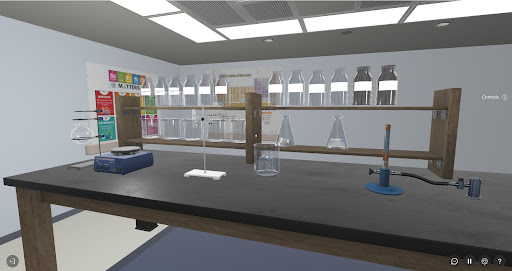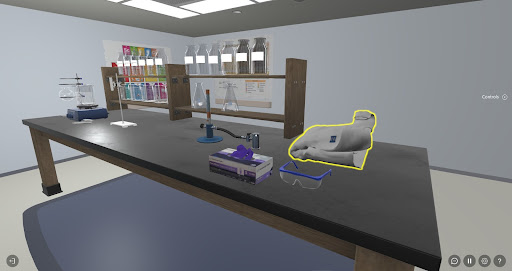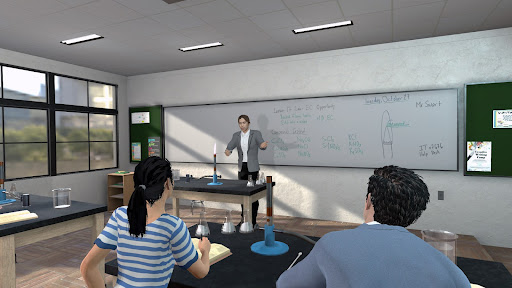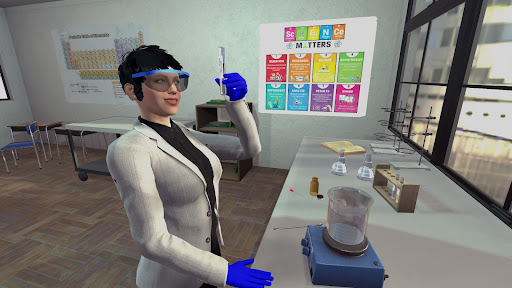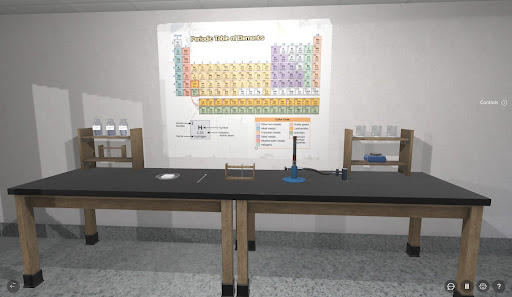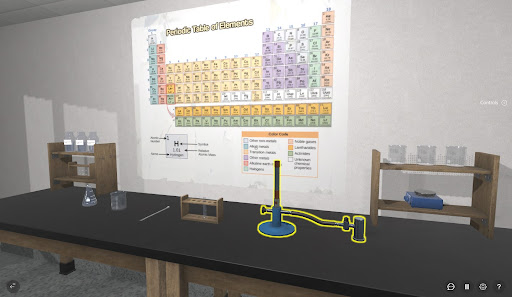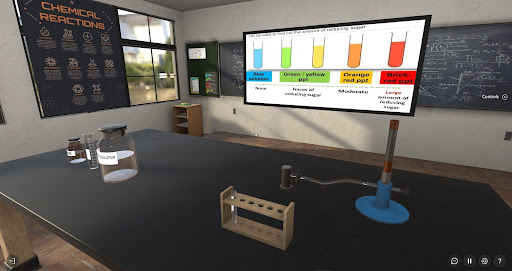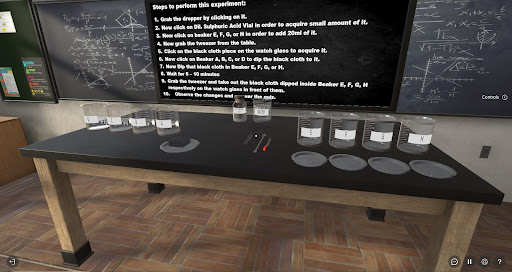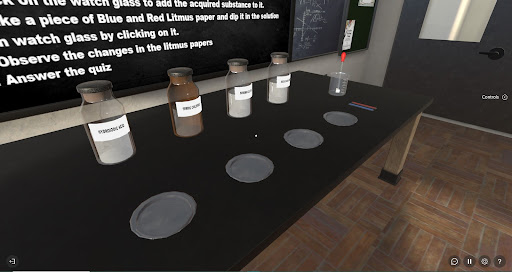CHEMISTRY LAB SIMULATIONS
Learn faster and safer with virtual reality
Flames Test
imulation where you can test various substances and analyze their behavior when exposed to flame and get detailed description about the reaction why the flame color is yellow,green depending upon the substance. An analytical method known as a "flame test" is used in chemistry to identify the presence of certain elements, typically metal ions, based on each element's distinctive flame emission spectrum which may be affected by the presence of chloride ions.
Introduction to Apparatus
A simulation where users can click on an apparatus and learn how to use it just like in a real lab. This simulation contains 5 devices: flask, beaker, spatula, test tube and burner. Users can click any apparatus in front of them in any order to learn about the use of that apparatus.
Chemical Test For Phosphate
It is a simulation in which the user takes a test salt, observes the reaction and understands the result, just like in a real lab. The chemical experiment performed in this simulation is a chemical test for phosphate. A simulation in which the user takes the original salt as a sample and uses a test tube and burner to test for the presence of phosphate ions in a given salt, just like in a real experiment.
Tollens Test
Simulation where users would be able to mix the test solution, observe the reaction, and understand the results, just as they would in a real laboratory setting. The chemical experiment performed in this simulation is Tollen’s test. This test is used to check if sugar is present in the substance or not. Users could select the substance they want to test and follow the steps to mix the solution and observe the reaction. If the substance contains sugar, a silver mirror would form on the inner surface of the test tube, just as it would in a real-world experiment. Users are given quizzes in between to check if they understood the reaction.
Periodic Table
A simulation in which the user is asked a series of questions related to the periodic table and asked to determine the correct element related to the question by clicking on the periodic table display in front of them. This simulation helps users get a good idea about the elements of the periodic table.
Molecular Builder
The Molecular Builder VR simulation allows users to create and manipulate molecules in a virtual environment. This simulation allows users to visualize their three-dimensional structures and understand their chemical properties. This simulation can be useful for chemistry education and research, allowing users to explore molecular structures and interactions in a hands-on, interactive way .
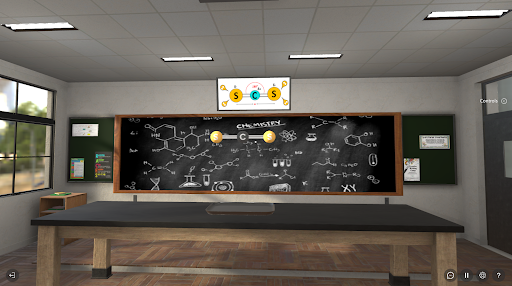
Detection Of Sugar In Urine
The simulation can be used to teach individuals how to perform a test for the presence of sugar in urine. The VR simulation can provide a realistic and interactive learning experience, allowing individuals to practice the procedure in a safe and controlled environment. In this VR simulation, the individual can select the necessary equipment and materials, Once the individual has Grabbed the urine sample, they can perform the Benedict’s test and observe the color change. The VR simulation can provide real World Experience ,allowing them to improve their skills and gain confidence in performing the test.
Cleaning Muddy Water
Simulation where users would be able to mix the test solution, observe the reaction, and understand the results, just as they would in a real laboratory setting. The chemical experiment performed in this simulation is Cleaning Muddy Water. The Muddy water contains suspended solids chemicals and germs in suspended impurities of muddy water are separated by filtration. On leaving the water undisturbed after swirling with alum the fine mud particles are settled down due to the chemical nature of alum the small particles of suspended solids group together until they are of such size that they sink and can be removed. Even though the water may look clean at this stage it still has germs in them. On boiling, excessive heat kills the germs.
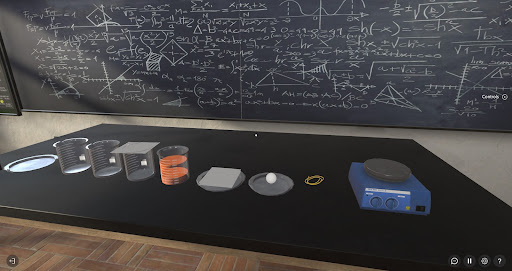
Detecting Bleaching Powder
Simulation where users would be able to mix the test solution, observe the reaction, and understand the results, just as they would in a real laboratory setting. The chemical experiment performed in this simulation is Detecting Bleaching Powder. In this experiment we will determine which among the given two substances is a bleaching powder, just as it would in a real-world experiment. Users are given quizzes in between to check if they understood the reaction.
Solid, Liquid and Gasses
The Solid, Liquid, and Gases VR simulation is an interactive educational tool that allows users to explore and learn about the physical properties of matter. It includes visual and auditory cues that demonstrate how particles behave differently in different states of matter. The simulation provides users with a better understanding of the behavior of molecules in solid, liquid, and gas states, and how temperature and pressure affect their behavior. It can be used in a classroom setting or as an individual learning tool.
